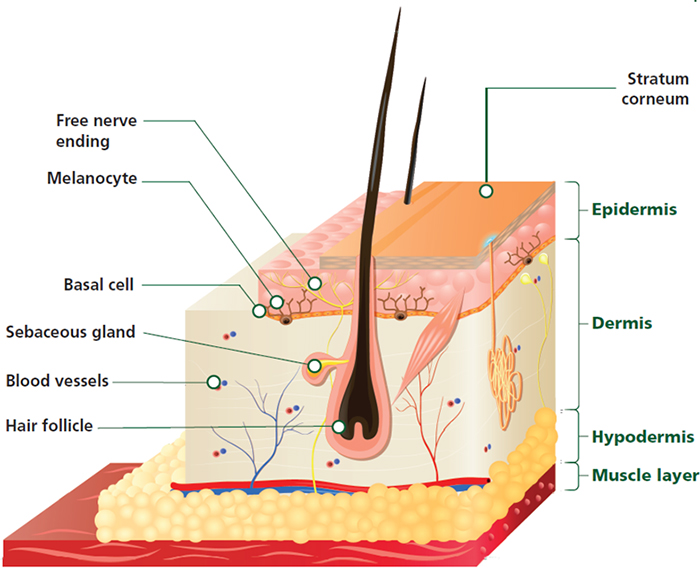The skin is the largest organ in the body and it has many roles, from helping to regulate body temperature to acting as a barrier against harmful bacteria and chemicals. The key to healthy skin is to maintain its moisture because if the skin is dry, its ability to function effectively is impaired.

Skin has three main layers. The epidermis is mostly comprised of keratinocytes €“ cells which are formed in the lowest layer and, as they mature, move towards the surface (the stratum corneum), where they are constantly shed and replaced with the layer underneath. In healthy skin, this process takes three to four weeks. The stratum corneum also acts as a barrier to prevent moisture loss and stop allergens and irritants from damaging the skin and entering the body.
The dermis lies beneath the epidermis and is thicker. It contains many different structures, including blood vessels, nerves, proteins such as collagen, sebaceous glands and the base of hair follicles. The sebaceous glands secrete sebum €“ a mixture of oily fats that helps to keep the skin healthy.
The innermost layer, the subcutaneous tissue (comprised of the hypodermis and the muscle layer), is an important insulator as it helps to regulate the body's temperature and protect its vital internal organs.
